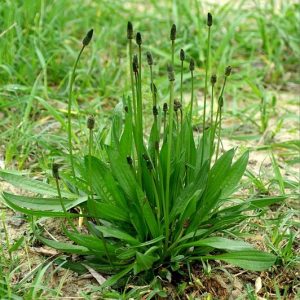
(Source: Aboutlifting.com)
From giant redwoods to small bonsai trees, all plants are bracing for a future of increasing global CO2 emissions.
FACT! In 2015, we as humans pumped out 36.3 GIGATONNES of CO2 into our atmosphere (GCP, 2016).
The Dilemma: Though rising atmospheric CO2 is almost always seen as a bad thing, the astute readers among you may ask: “isn’t that a good thing for plants, seeing as how they need CO2 to photosynthesise (convert CO2 gas into sugar for food)?”
The answer is a bit more complex than yes or no.
Studies have shown that in the short-term, increased CO2 concentrations:
- Improve the efficiency of plant water use (Drake et al., 1997).
- Increase the rates of photosynthesis (Drake et al. 1997).
- Increase plant growth and productivity (Raschi et al., 1997).
… But.
Over longer timescales (days to weeks), the photosynthetic capabilities of plants can decrease because of a process called ACCLIMATISATION. To put it briefly, acclimatisation is when there is a build-up of leaf carbohydrates, such as sugars and starch, which triggers a decrease in the amount of RUBISCO enzyme (the enzyme responsible for upholding photosynthesis) in plants (Cheng et al., 1998).
Is the future all DOOM and GLOOM?
Encouragingly, the future looks somewhat optimistic…
A study using natural springs, which already emit high concentrations of CO2, found that over multiple generations, the “spring” plants that live there have become adapted to the elevated CO2 concentrations we can expect in the future, through the power of GENE EXPRESSION (Watson-Lazowski et al., 2016).

(Source: dspermaculture.wordpress.com)
Interestingly, the populations of “spring” and “non-spring/control” plants were genetically identical but over 800 genes were expressed differently between the two. Gene expression is kind of like a plug switch, genes can be turned on or off depending on the plant’s needs in order better suit its environment; it is thought that CO2 was directly regulating these changes in gene expression (Watson-Lazowski et al., 2016).
Differences in gene expression resulted in “spring” plants NOT BECOMING ACCLIMATISED to elevated CO2 conditions. In fact, the “spring” plants were able to photosynthetically fix carbon faster and produce larger carbon pools, they then used this additional carbon to enhance their growth through greater respiration (release of energy from carbon) (Watson-Lazowski et al., 2016).
Gene expression also caused the “spring” plants to increase their STOMATA (leaf pores used for gas exchange) index by 5.2% in elevated CO2 conditions, perhaps as an adaptive response (Watson-Lazowski et al., 2016). This contradicts previous studies that predict stomata numbers should have decreased.
What does this mean?
Well, it means that ability of plants to change their gene expression could be the underlying factor that enables future generations to adapt to rising atmospheric CO2. Questions as to whether this stark change in gene expression is capable in all plants and whether it is enough to enable them to fully adapt to future CO2 concentrations is yet to be tested; but this study shows that in the battle against climate change, plants may have a fighting chance!
References:
- CHENG, S. MOORE, B. & SEEMAN, J. (1998) Effects of short- and long-term elevated CO2 on the expression of ribulose-1,5-bisphosphate carboxylase/oxygenase genes and carbohydrate accumulation in leaves of Arabidopsis thaliana (L.) Heynh. American Society of Plant Physiologists. 116 (2). pp. 715-723.
- DRAKE, B. GONZALEZ-MELER, M. & LONG, S. (1997) More efficient plants: a consequence of rising atmospheric CO2. Annual Review of Plant Physiology & Plant Molecular Biology. 48. pp. 609-639.
- GLOBAL CARBON PROJECT, 2016. Global Carbon Budget. [pdf] Futurearth. Available at: http://www.globalcarbonproject.org/carbonbudget/16/files/GCP_CarbonBudget_2016.pdf.
- RASCHI, A. MIGLIETTA, F. TOGNETTI, R. & VAN GARDINGEN, P. (1997) Plant Responses to Elevated CO2: Evidence from Natural Springs. New York: Cambridge University Press.
- WATSON-LAZOWSKI, A. LIN, Y. MIGLIETTA, F. EDWARDS, R. CHAPMAN, M. & TAYLOR, G. (2016) Plant adaptation or acclimation to rising CO2? Insight from first multi-generational RNA-Seq transcriptome. Global Change Biology. 22 (11). pp. 3760 – 3773.
Word Count: 498
Recent Comments